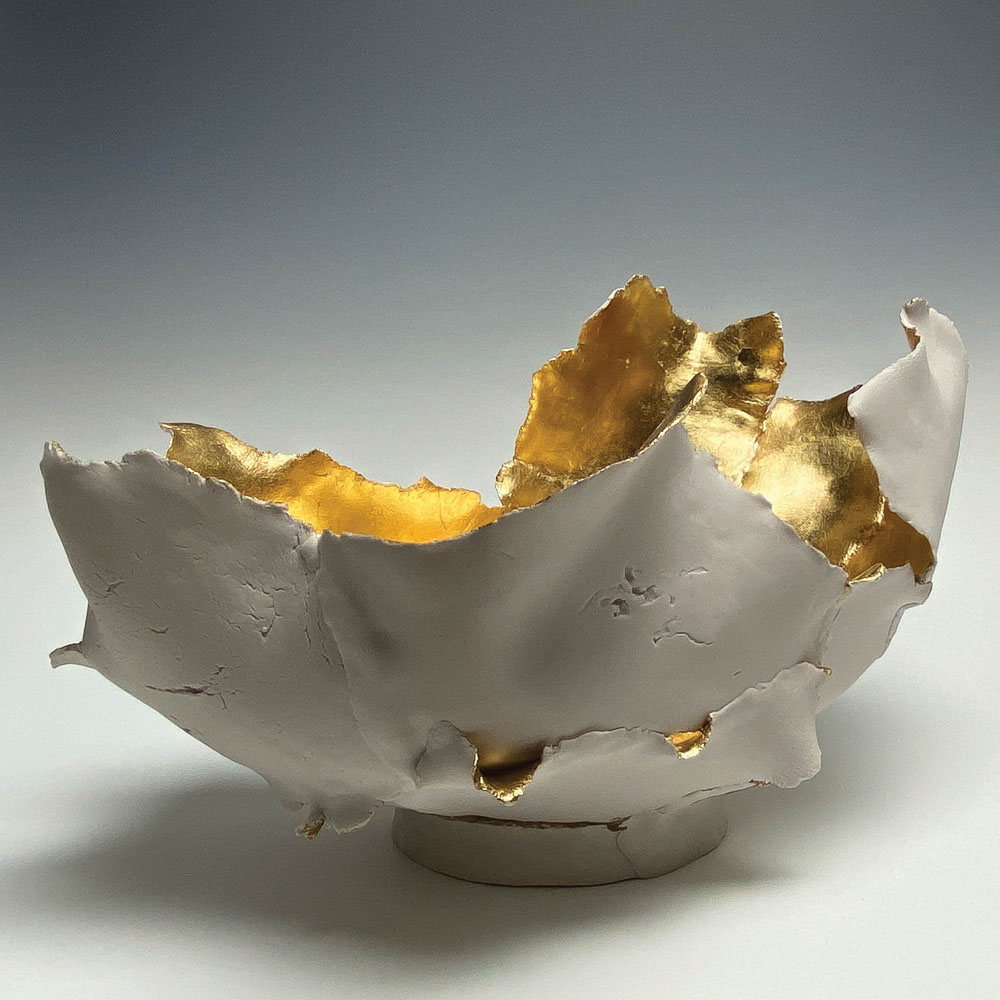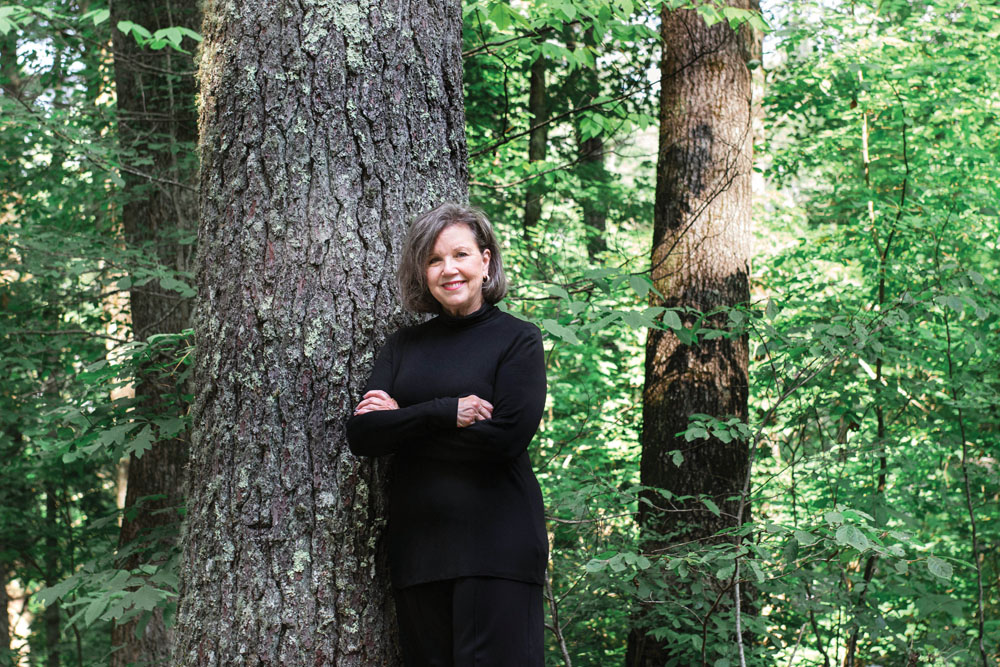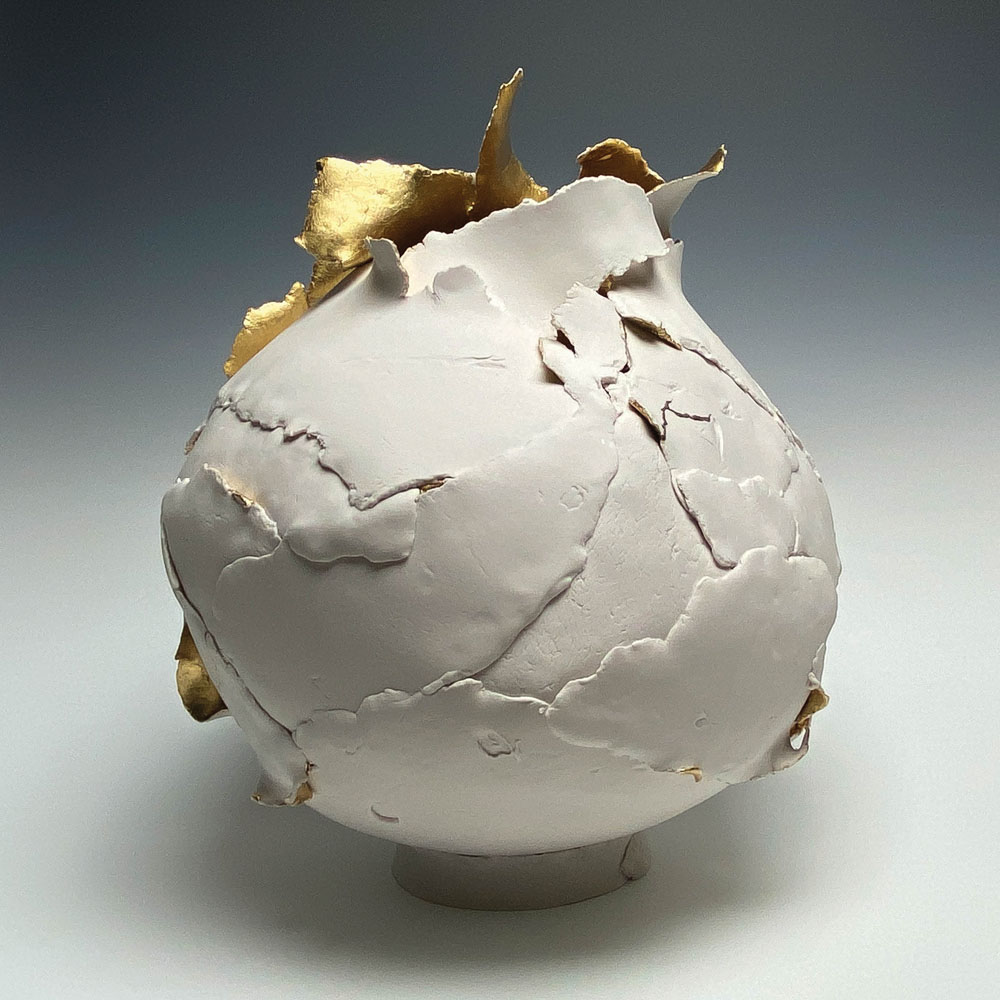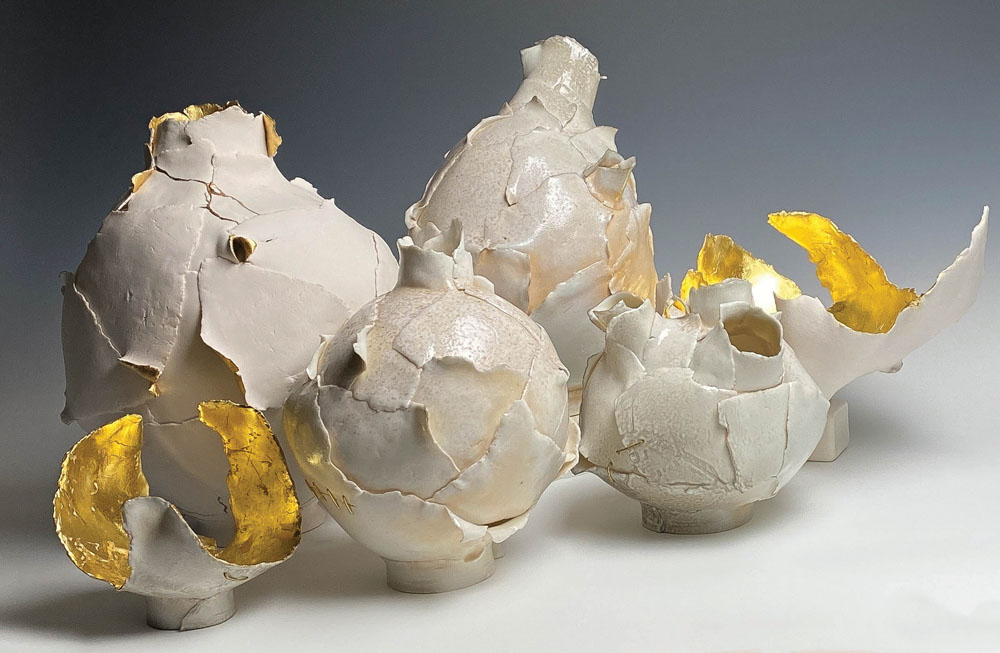
At first glance, Deneece Harrell’s pieces seem to have been salvaged from devastation — or at least from a process gone seriously awry.
But that’s the whole point. Her evocative work in porcelain is drawn from the Japanese practice of kintsugi (“golden joinery”), whereby broken or damaged pottery is reconstructed and given a second life, often adorned with the application of gold leaf.
This expression of “mending the broken,” states Harrell, “gives my work a historical context and blurs cultural lines.” She explains that “the kintsugi vocabulary of staples, gold leaf, encaustic, and a variety of firing methods are extensions of the process and inform the dialogue.”
Harrell uses porcelain as a painter uses a brush or a sculptor uses a hammer and chisel — to interrogate her own relationship with the material, and, through that, explore motifs of impermanence and change. She set out to find a medium that would be the foundation for her process — which is really a form of philosophic inquiry.

Deneece Harrell is a practitioner of tricky porcelain. Portrait by Clay Nations Photography
It was a quest that began years ago in college, while she was working toward a degree in art and design at the University of Florida, when she first encountered clay. The attraction became integral to her career as an interior designer and as a visual-art teacher in public schools, where clay played a prominent role in her syllabus.
With her career severely affected by COVID-related limitations, Harrell relocated to the high-elevation resort town of Highlands three years ago to set up her own studio to work with porcelain — the “diva of clay,” as characterized by one of her mentors, Antoinette Badenhorst.
“The diva is addicted to water,” Badenhorst has written. “Give her too much and she becomes ‘drunk’ and collapses. Give her too little, and she stays rigid.”

Harrell sustains the metaphor. “The form of the vessel itself relates to the body,” she observes. “It’s described as having a foot, shoulder, neck, lip – all human characteristics invoking questions of relationships, both personal and interpersonal.”
Often starting with a freehand sketch for a new piece, Harrell will stretch, tear, puncture, and scrape variously shaped slabs of clay before attaching them to a foundation. The configurations play with notions of relationships broken or becoming; gestures of falling apart or of trying to connect. “Porcelain’s [tendency] to absorb water quickly and to lose strength or collapse reminds me of my own limits,” she says. “I like that the kiln, the heating-and-cooling process itself, adds its own creative expression outside of my control.
“The incorporation of the unexpected is essential. That’s how life comes to us.”
Firing porcelain is notably challenging and unpredictable, mirroring the tension between strength and fragility. The lack of glazing renders a smooth, white, matte skin after firing, to which Harrell applies gold leaf, a kintsugi symbol not only of value, but, in its capture and play of light, of the inner spirit.

She sometimes adds her own signature metal staples, formed of hammered brass wire, to complete the piece. The highly involved technical process prompts conversations between fellow makers as well as among viewers. It has also sparked notoriety among curators far and near: in addition to a current local show at the Folk Art Center and an upcoming regional one at the GreenHill Center for North Carolina Art in Greensboro, Harrell is included in the Appalachian Regional Commission Exhibition in Washington, DC, through February 2024.
Earlier this year, Harrell refined her process even more with a month-long workshop at Denmark’s ceramics research center Guldagergaard. There she deepened her knowledge of working with wood-fired kilns and learned more about how soda ash reacts with the porcelain at different temperatures, as well as how to better incorporate her hand-hammered staples. She was especially inspired by the work of British potter Cicely Peers, made at Guldagergaard as part of the center’s international outreach program.
Though Harrell has worked in other genres — acrylics, watercolor, and charcoal, for instance — porcelain, thanks to its unpredictability, remains the medium that has the most to say. “I seek to expose my inner dialogue,” she says.
Deneece Harrell, Highlands. Harrell’s work is represented by the Southern Highland Craft Guild and will be part of the Finding Balance Group Show in the Focus Gallery of the Guild’s Folk Art Center (Milepost 382 on the Blue Ridge Parkway) through Monday, Nov. 13. Also find the artist’s work at Bascom: A Center for the Visual Arts, 323 Franklin Road, Highlands; and at The Gallery at Flat Rock, 2702-A Greenville Hwy., Flat Rock.
